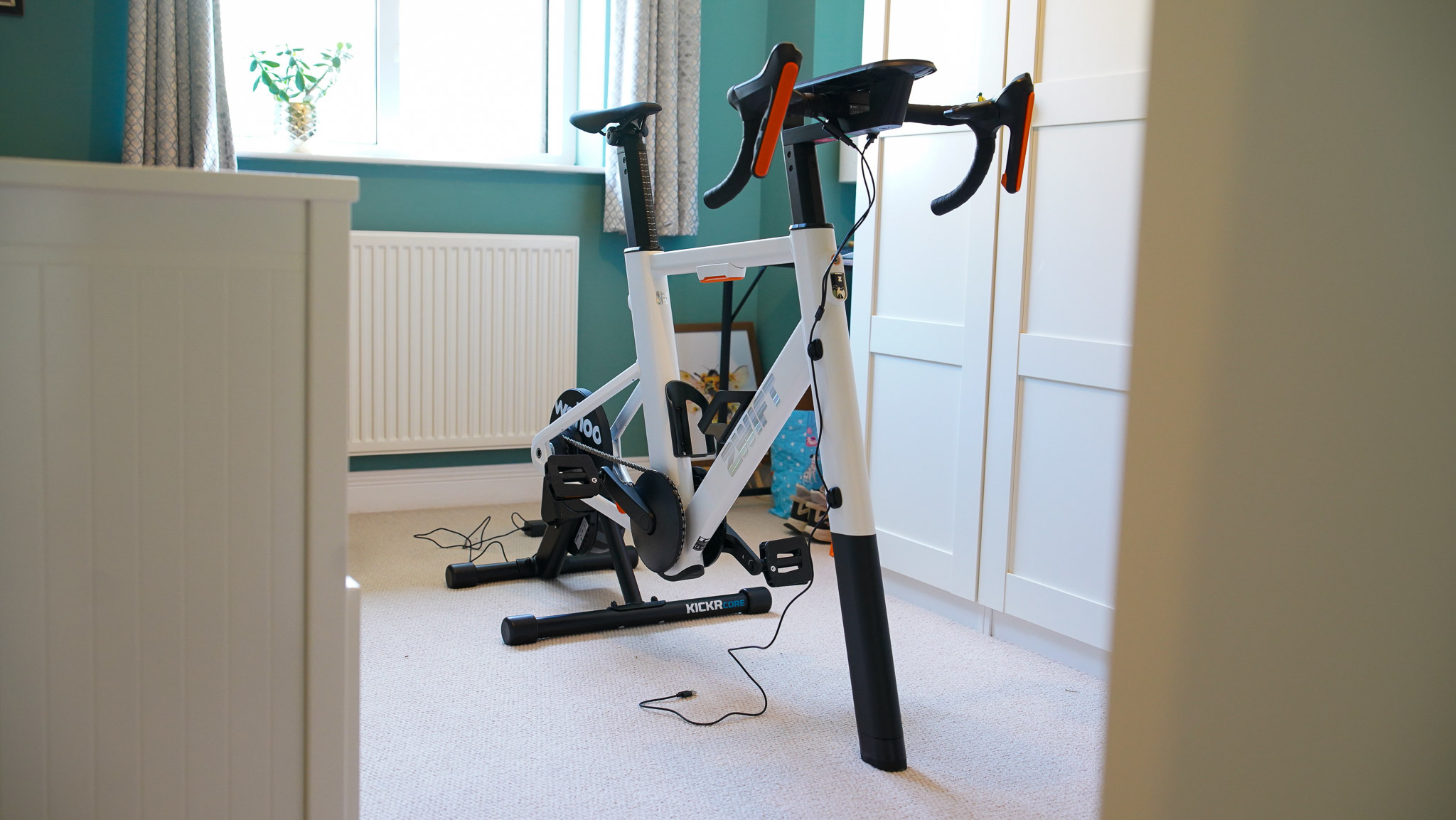
Indoor training used to be pretty boring. You had to ride on rickety rollers and watch the paint dry while sweating profusely. Then, training apps like Zwift and smart trainers from Wahoo came along. All of a sudden, people chose to ride indoors because it was fun and safe.
There have already been many ways to enjoy cycling around the virtual worlds of Zwift, but the Zwift Ride is the first all-in-one solution that enables you to make the most of your subscription without having to set up a bicycle shop in your garage.
The Zwift Ride is a wonderfully simple, elegant, and affordable solution that will please both Zwift newbies and more seasoned riders. Even after just a few weeks of use, it’s hard not to be enthusiastic about the Ride. I’m certainly sad that I will have to part with it after the loan period expires.
Should you get one, and how does the Zwift Ride differ from the best exercise bikes already available on the market? How do you assemble it, and how much bicycle knowledge is required for the perfect setup? Let’s get going.
Zwift Ride review
Price and availability
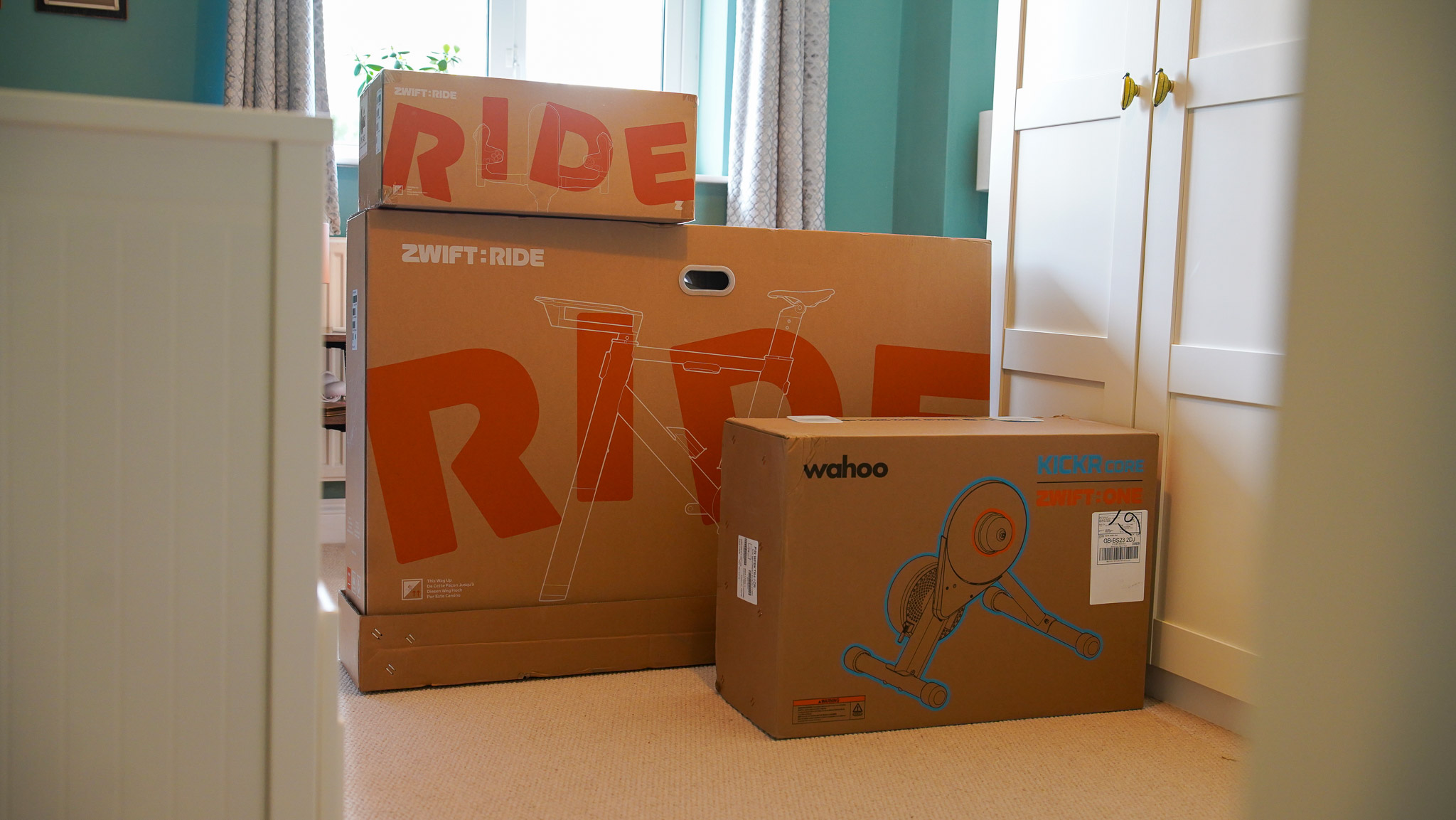
The Zwift Ride was announced in June 2024 and is available to buy now directly from Zwift UK and Zwift US for a recommended price of £1,200/ $1,300. The package includes the Zwift Ride Smart Frame and the Wahoo Kickr Core smart trainer.
The Wahoo Kickr Core currently costs £580, and the Zwift Play controllers another £100, so the cost of the Zwift Ride Smart Frame is roughly £520.
Zwift currently doesn’t sell the Zwift Ride Smart Frame on its own, although rumour has it that the company might start selling it on its own at some point in the (near) future.
One accessory I’d recommend is the Zwift Ride Tablet Holder (Zwift UK/ Zwift US), which costs £49/ $50. This allows you to mount a tablet at the end of the long tray at the front of the bike, leaving more space for other stuff on the tray itself (itshelf).
Specifications
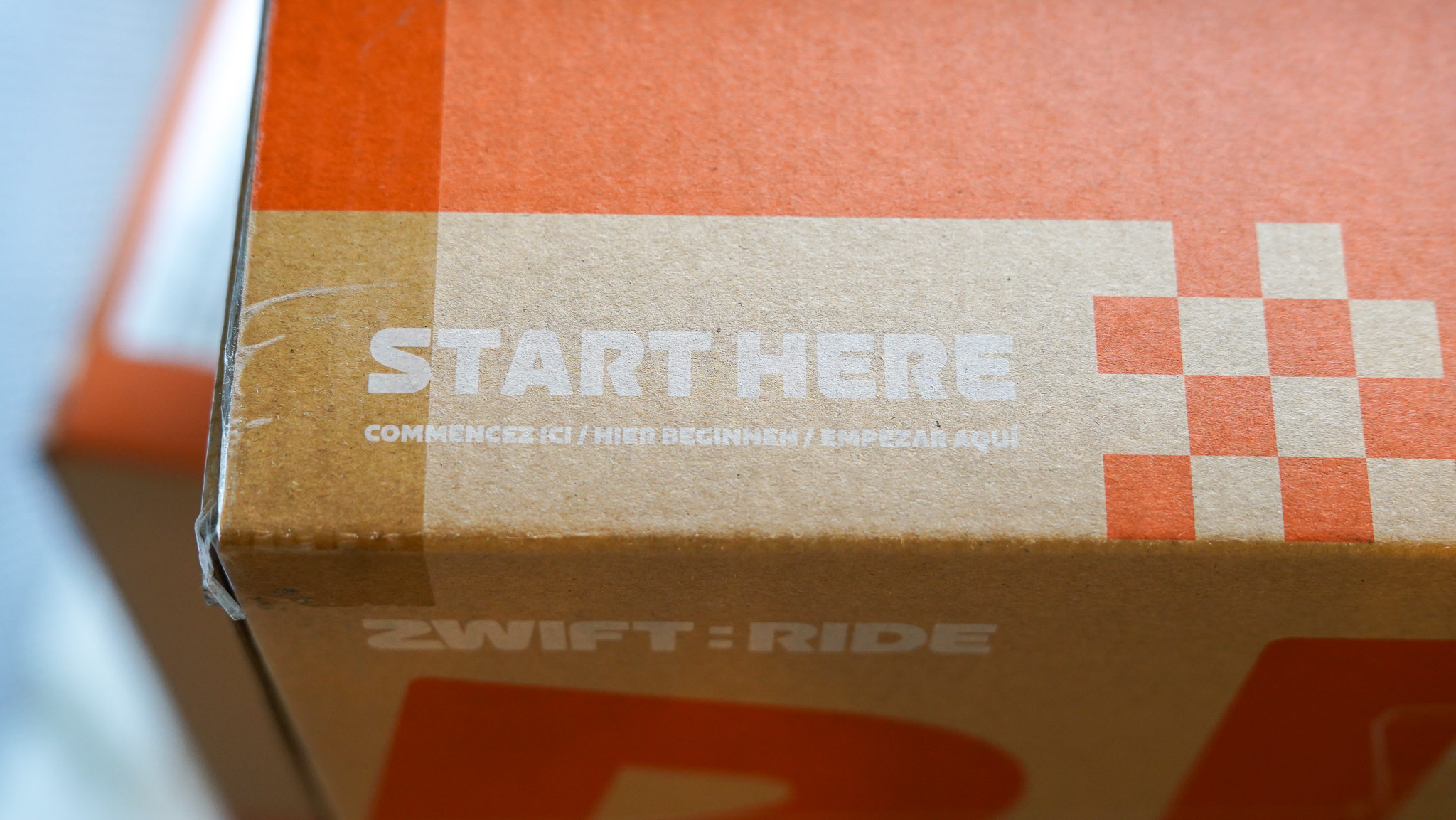
- Dimensions (L x W): 136 x 58 cm
- Assembled weight: 35.4kg/ 78lbs
- Max rider weight: 120kg/ 264lbs
- Drivetrain: Chain
- Pedals: flat (included)
- Power Accuracy: +/- 2%
- Maximum Power Output: 1,800W
- Maximum Simulated Grade: 16%
- Resistance Type: Electromagnetic
- Controller battery life: 20 hours per charge
Unboxing and setup
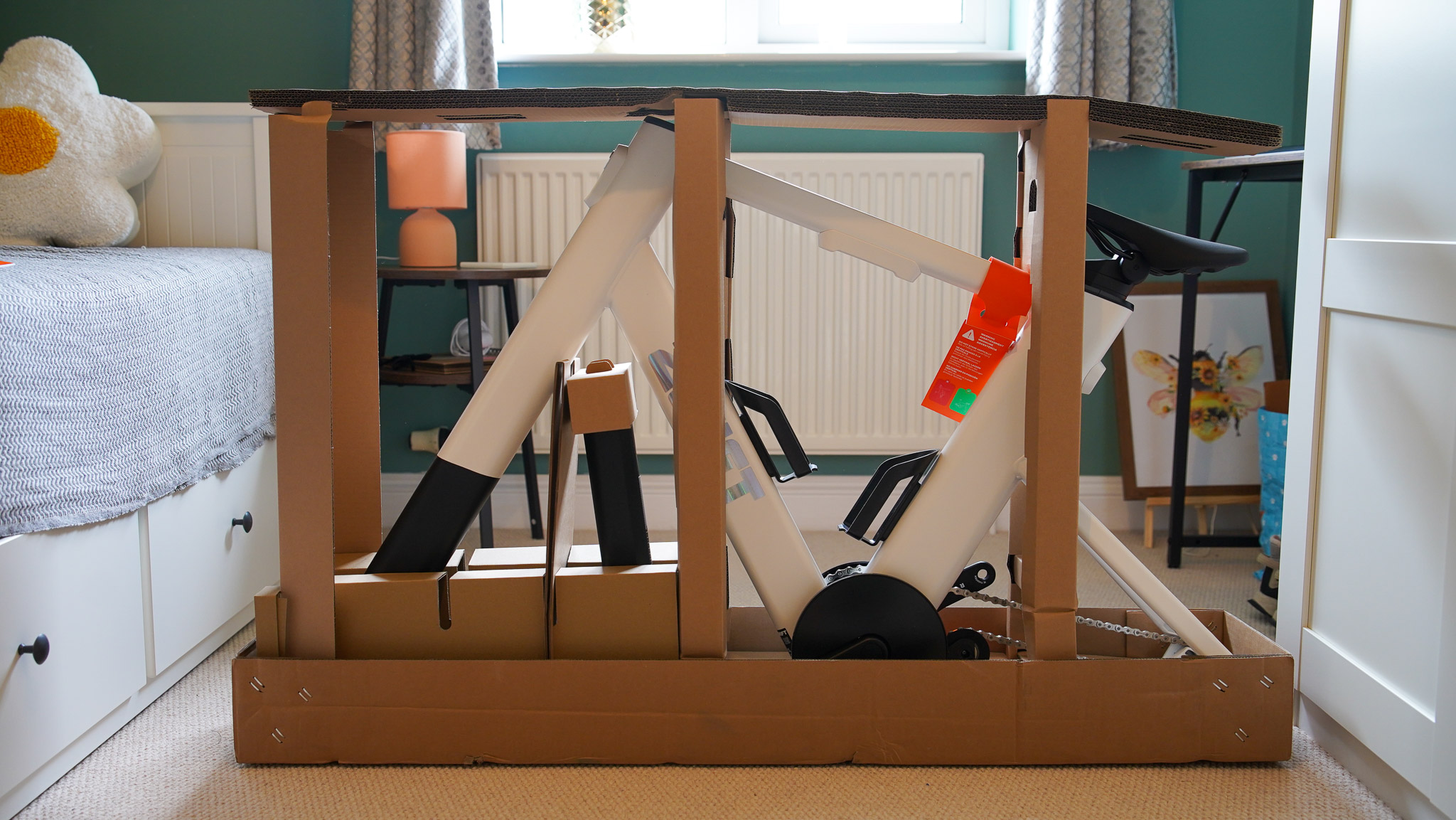
I love good packaging design, especially when it comes to larger boxes. I was a big fan of the box of Pure Advance Flex when I tested it, and I’m over the moon about how clever the Zwift Ride’s box is.
Usually, you have to tip large items such as bikes from their boxes, which isn’t just a pain in the neck but also dangerous. The Zwift Ride was designed so that once you take the support bands off, you can lift the box off the bike – magical!
Better still, there is no sticky tape or any polystyrene inside the boxes. One of my pet peeves is the amount of non-recyclable waste that gets delivered alongside the bikes and home gym equipment, but there is none of that here.
The assembly is pretty straightforward, and should you get lost, there are instruction videos online which you can access by scanning the QR code in the box. To make things easier, the Zwift Ride was designed so it can be assembled using one tool only: the Allen key with the orange handle that’s stored on the frame.
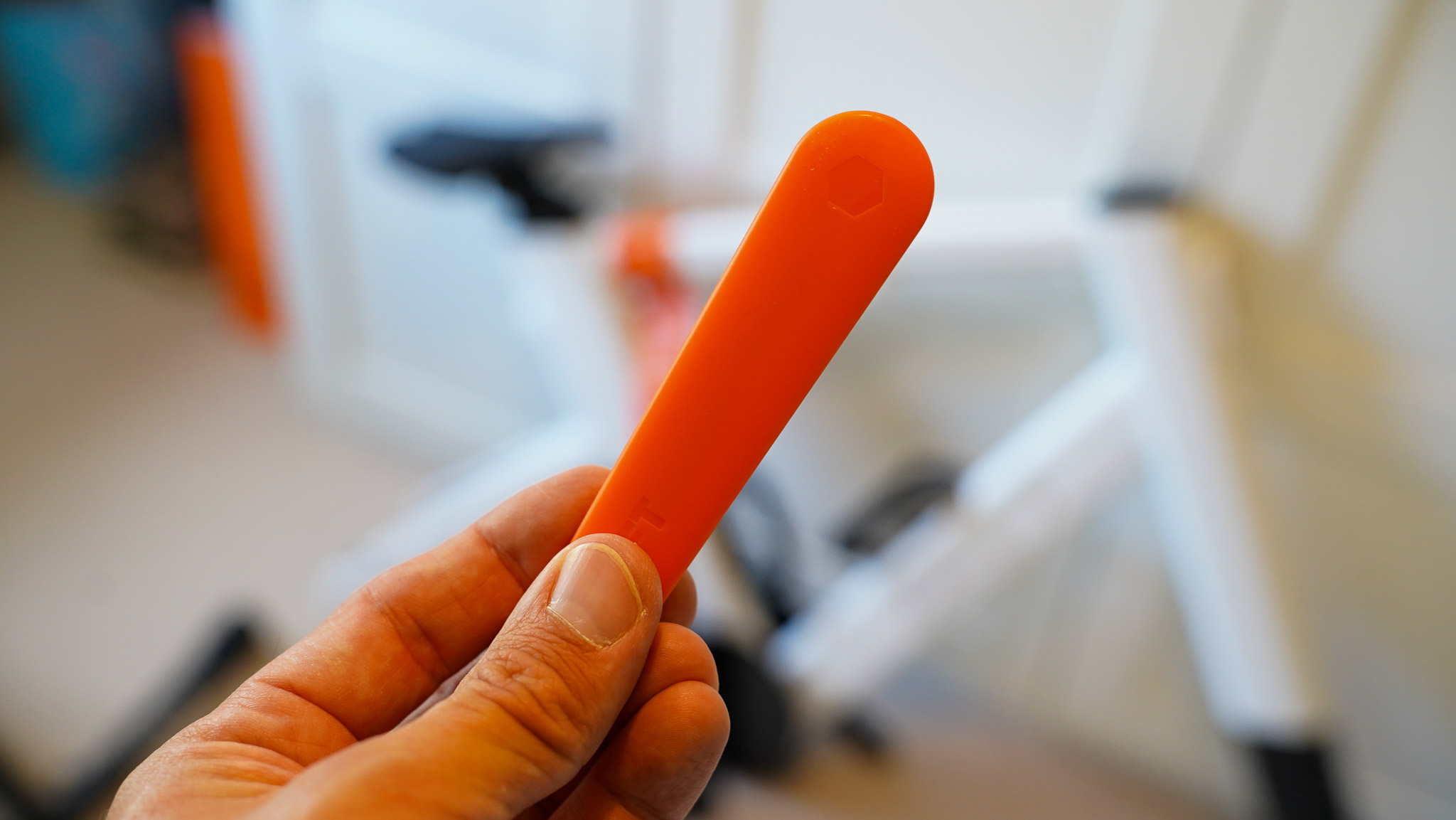
Plus, the boxes are all marked with numbers in the order you should open them. Other details help speed up the process, like how the chain is pre-lubricated and positioned so it can be dropped on the smart trainer more easily. Not to mention the clever chain tensioner, which allows you to position the chain perfectly without covering your hands in grease.
One thing you should do before your first ride in Watopia is to perform a spindown using the Wahoo app. This is to calibrate the Kickr Core so the power readings are accurate. Just open the Wahoo app, connect the smart trainer and look for the ‘perform spindown’ option in the settings.
All in all, it shouldn’t take you longer than half an hour to get the Zwift Ride set up and ready to go.
Design and build quality
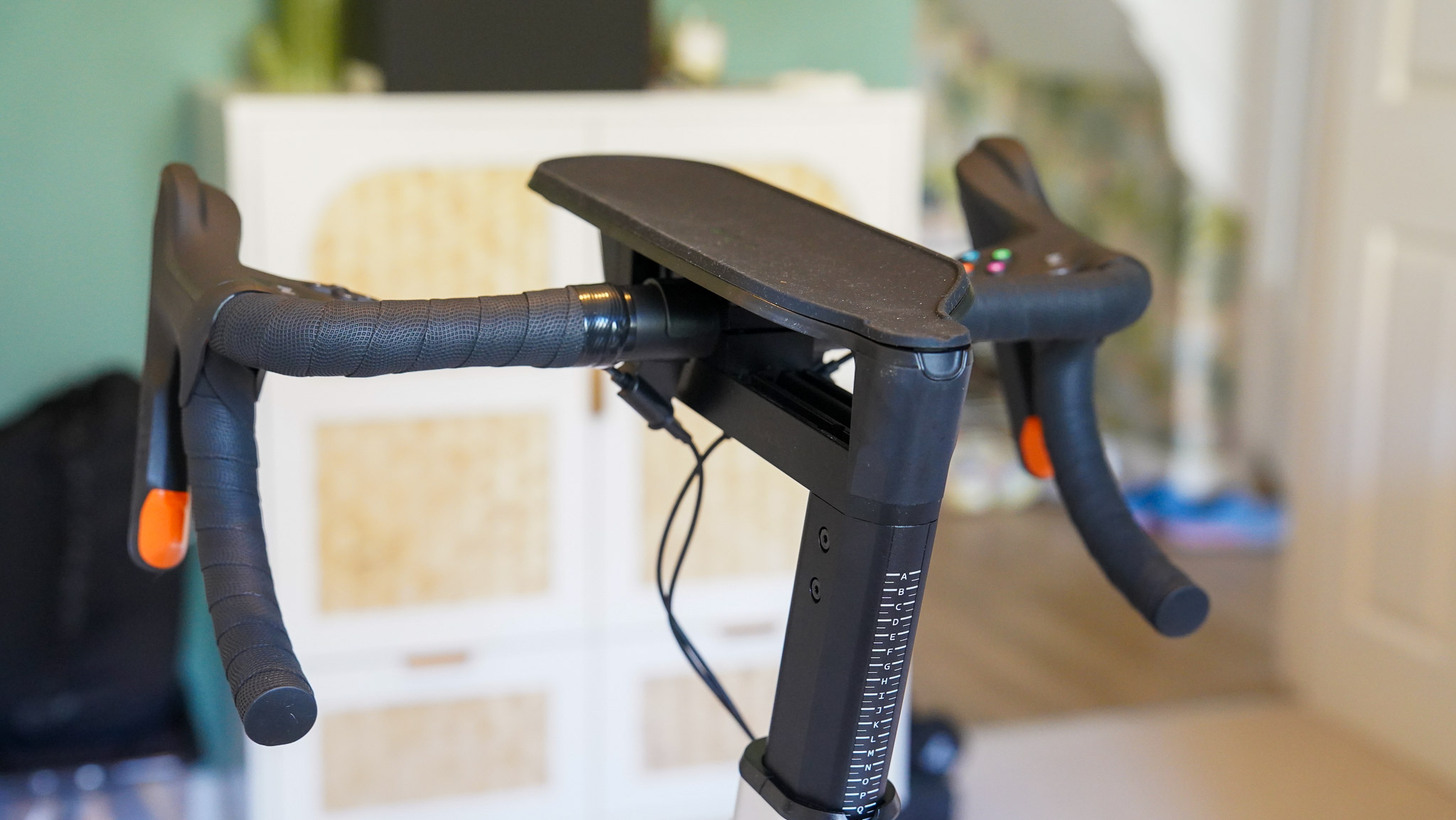
The Zwift Ride is a premium product without the premium price tag. The different components fit together perfectly, and the bike is also adjustable enough so most riders can find the ideal riding position.
In fact, there is a card in the box that assigns a letter to your heights, and from there, all you have to do is adjust the saddle, bars and reach to match the corresponding letter. It’s super simple and takes no time at all.
As we all know by now, the Wahoo Kickr Core is solid as a rock and runs smoothly. This smart trainer is Wahoo’s entry-level model. That said, it’s anything but cheap. It sports a 5.4-kilo flywheel and quiet electromagnetic resistance.
A wonderful piece of equipment, and better still, the one included in the Zwift Ride package isn’t some sort of watered-down version – it’s the real deal that can be used with any other bike, not just the Zwift Ride.
The smart bike itself can accommodate riders between 152 and 198 cm in height, with a maximum weight of 120kg. The crank length is 170mm and is non-adjustable. The flat pedals included in the box are fine, but of course, you can swap them out for any other clipless pedal or power meter you want.
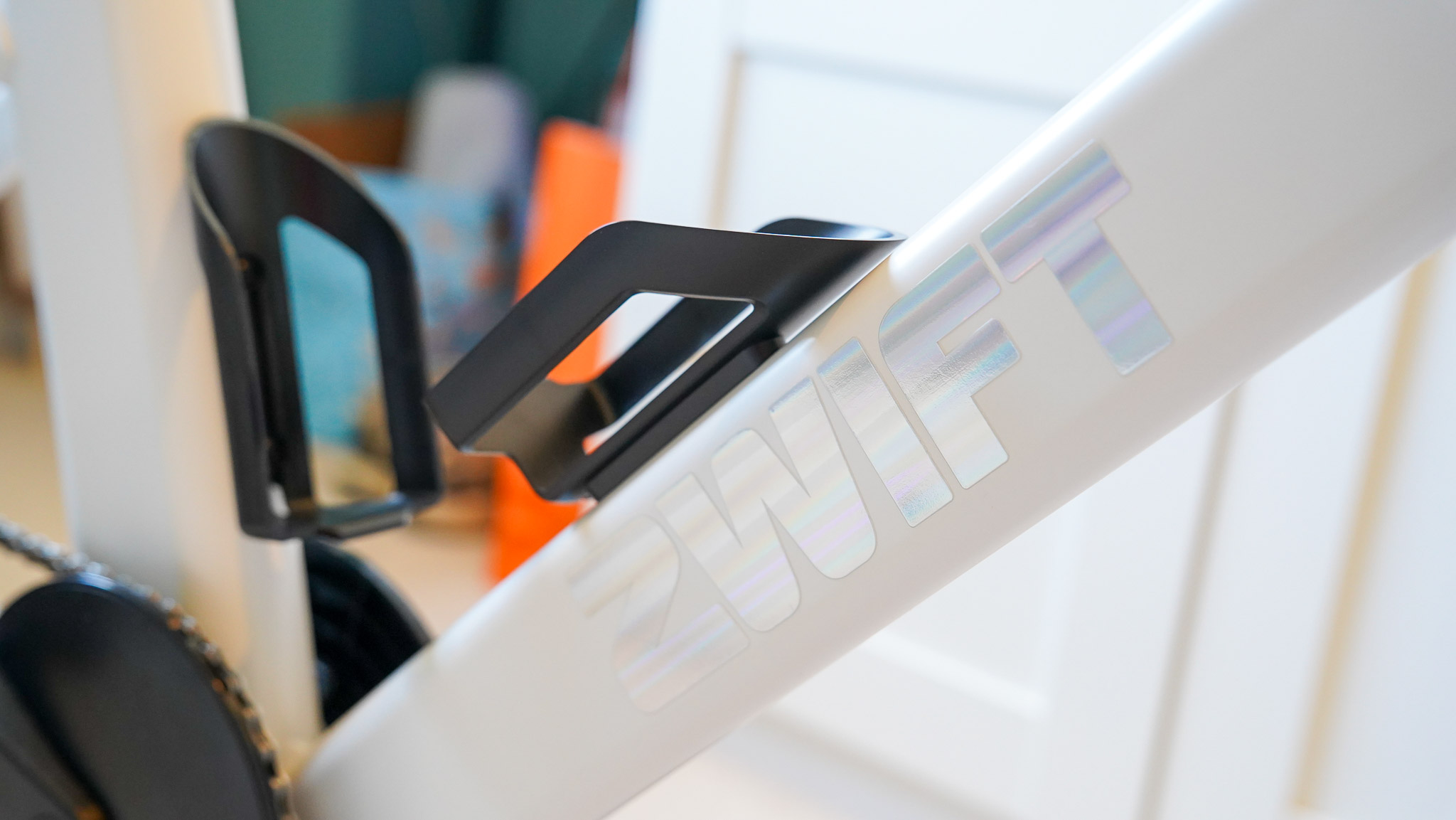
The Zwift Ride comes with two bottle cages, a nice touch for indoor training, as you tend to sweat a lot more. These are half-cages, making it easier to remove and drop the bottles back in when you ride.
The saddle is nice enough, although nothing fancy. I wore my cycling shorts to provide some extra padding, and the Zwift Ride’s saddle didn’t feel too hard or unforgiving.
The handlebar width is 42 cm (centre to centre), which is a good average. It houses the Zwift Play controllers and a few more buttons. The four buttons on each side can be fully customised to match your preferences.
My only grievance with the buttons, especially the long one, is that there isn’t a defined pressure point. Instead, you squeeze it, but I feel this might result in people pressing it too hard, which might compromise longevity.
The tray at the front of the bike is excellent. Since I didn’t have the Zwift Ride Tablet Holder, I used this tray to store my iPad for training, as well as other bits like my phone and fan controller. People with a smart TV or the Tablet Holder will have more room for snacks, etc., here.
Performance and features

When I first saw the press images, I wondered how stable the front of the bike would be, but I was pleasantly surprised. The bike is remarkably solid and hardly moved, even during strenuous FTP sessions. (I like punishing myself when I’m in the saddle.)
Once you fire up the Wahoo Kickr Core and turn on the Zwift Play controllers, they should appear in the Zwift app. One thing to note is that you have to turn on the Zwift Play controllers separately. Once they are on, though, they will act as one in the app.
The Play controllers are said to have a 20-hour battery life and should turn themselves off after use. They are colour-coded and will flash differently depending on what they’re doing (e.g. connecting to the app, needing a charge, etc.).
The Kickr Core is a smart trainer, which means it automatically adjusts the resistance to match the power output required by the Zwift app. You can adjust it manually if you’re free-riding, or it will change automatically when you’re doing a workout.
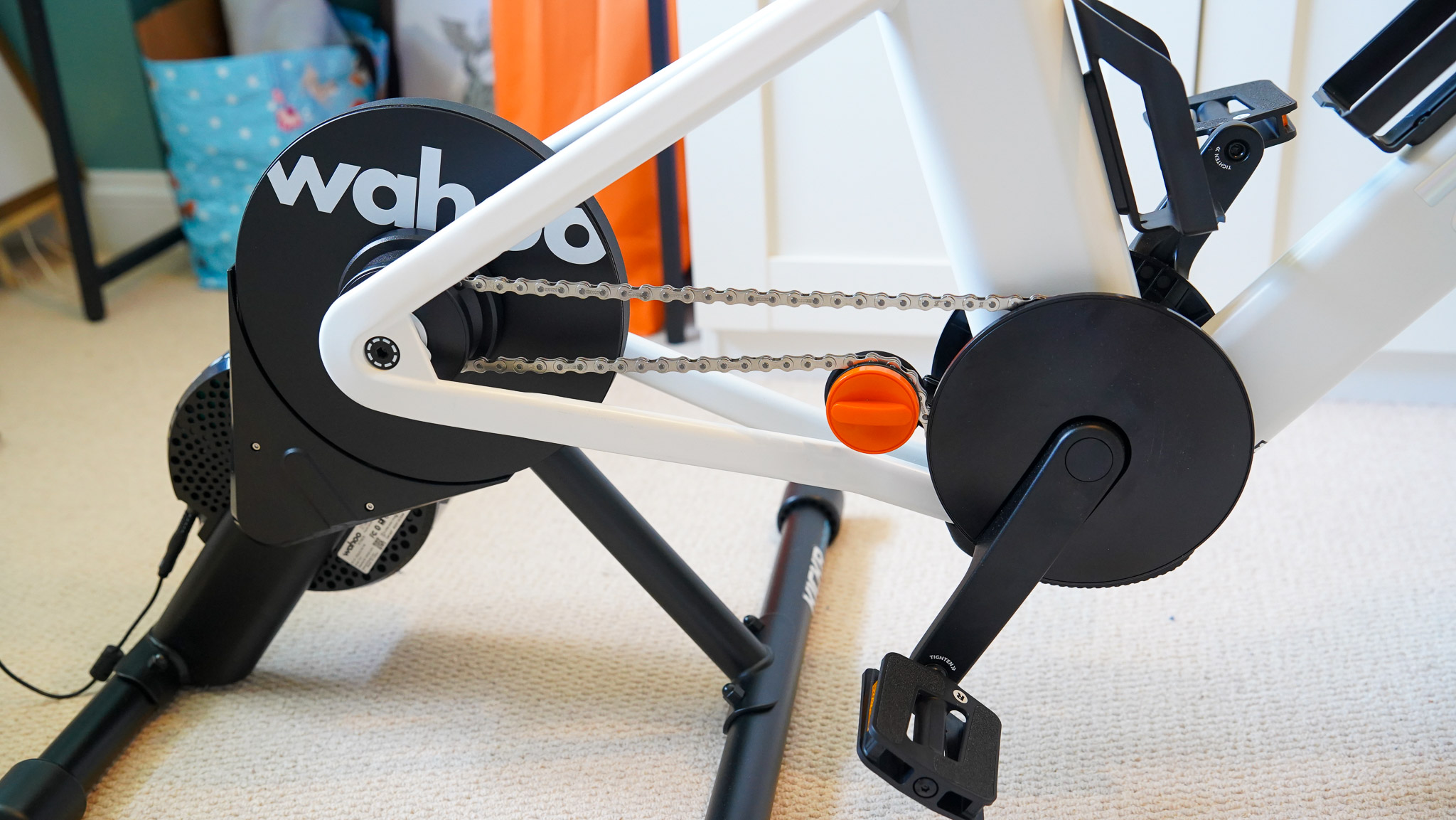
The Zwift Ride Smart Frame moves smoothly and effortlessly (well, virtually, anyway). There are no suspicious sounds coming from anywhere on the bike; all you hear is the quiet, droning sound of the Kickr Core behind you.
Once you get your bearings with the setup, I recommend doing an FTP test to calibrate the power zones in Zwift. If you already know this by heart, you can add it manually. Many smartwatches, such as Garmins, the Apple Watch and even the Galaxy Watch Ultra, can estimate FTP. However, it will be the most accurate if you do it in the app.
The Zwift Play controller works like a charm and, like the other buttons, can be customised to your liking in the app. I’d recommend checking what they do in the app before your first ride. You can’t make huge mistakes by not familiarising yourself with the layout, but you don’t want to fiddle around with them unnecessarily when you’re riding.
Verdict
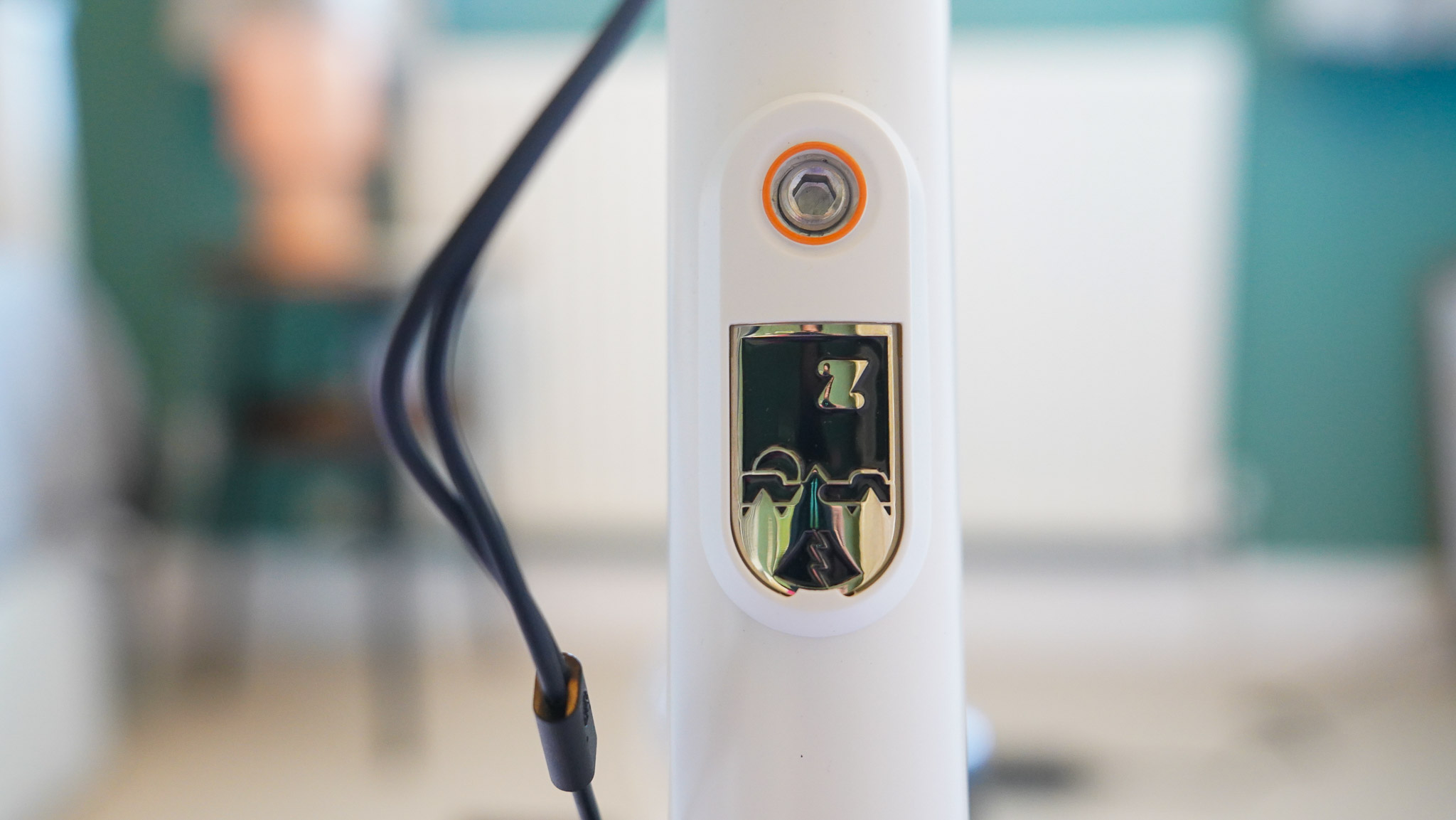
I must confess that I had way too much fun testing the Zwift Ride. Based on a few weeks of usage, I think this superbly made and affordable all-in-one solution certainly is the best Zwift accessory out there. I’m sad that I had to return it after the loan period, that’s for sure.
I’m in a bit of trouble when it comes to giving it a star rating, though. For new Zwift riders who haven’t got any kit, the Zwift Ride is the perfect jumping-on-point. It has everything you need to start your indoor cycling experience, coupled with the user-friendly setup and lovely build quality.
However, even though more seasoned Zwifters could definitely use the Ride, it’s likely they already have a smart trainer or a bike at home, meaning getting the full kit wouldn’t make much sense to them.
Of course, they can also invest in the Ride if they want to replace their ageing kit or want a more convenient way of training indoors than cleaning, dismantling and mounting their road bike on a smart trainer every time they want to churn out some miles in Zwift.
One thing’s for sure: the Zwift Ride is a brilliant piece of home gym equipment, and it’s a pleasure to ride. One very happy tester is logging off now.
Also consider
The Wattbike Atom delivers a realistic indoor cycling experience with smooth pedal feel, comprehensive connectivity, and sturdy construction. While it occupies significant space and has sluggish gear changes, its accuracy, design, and seamless integration with training software make it ideal for serious Zwifters. Read Leon’s full Wattbike Atom review.
The Wahoo Kickr Bike V1 offers a realistic indoor cycling experience with impressive gradient simulation and reconfigurability. However, it lacks built-in accessories like fans and phone holders and is not without design flaws. Despite minor Bluetooth lag, it remains another excellent choice for serious cyclists. It’s quite spendy, though. Read Mike’s full Wahoo Kickr Bike V1 review.







